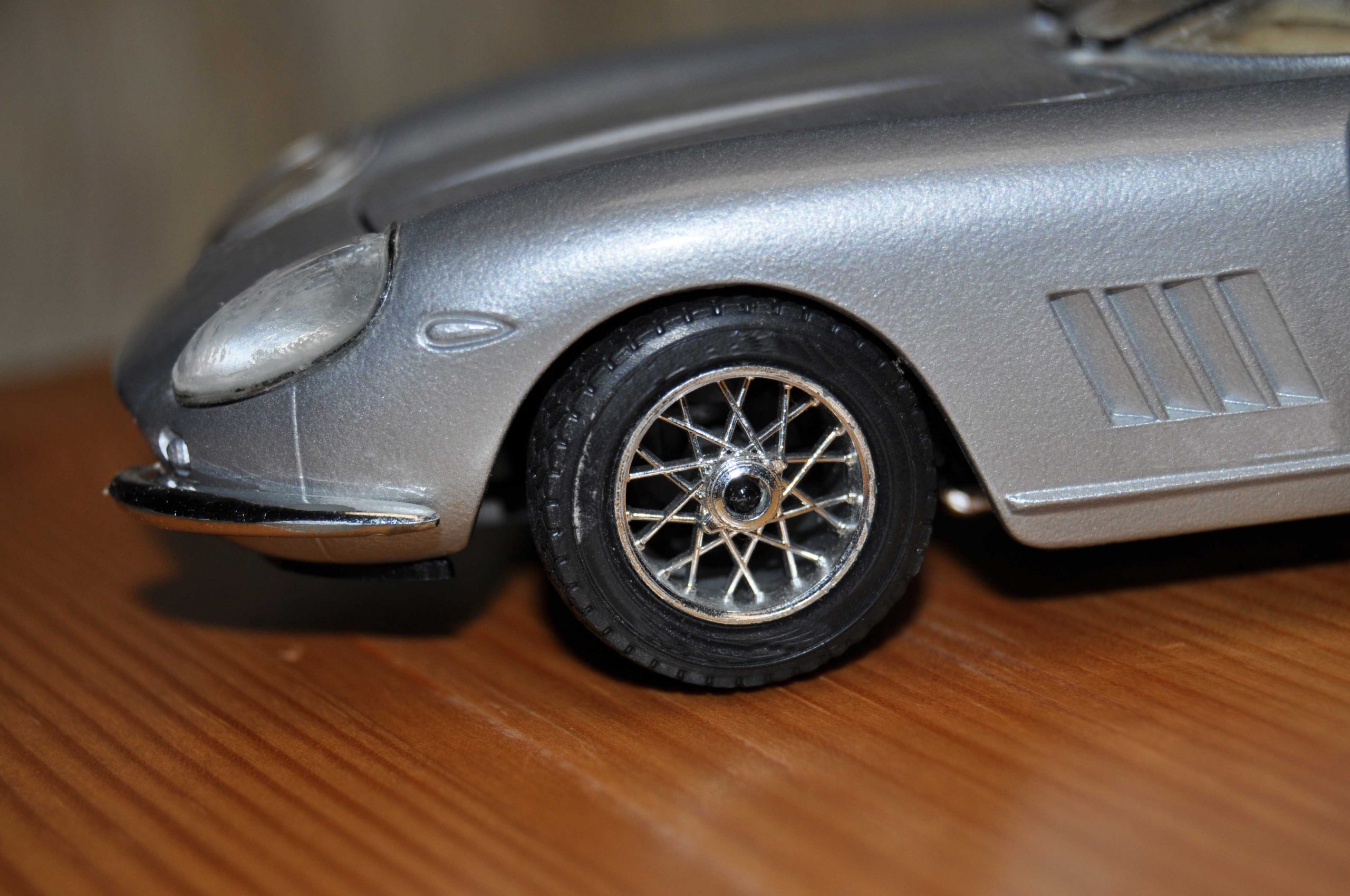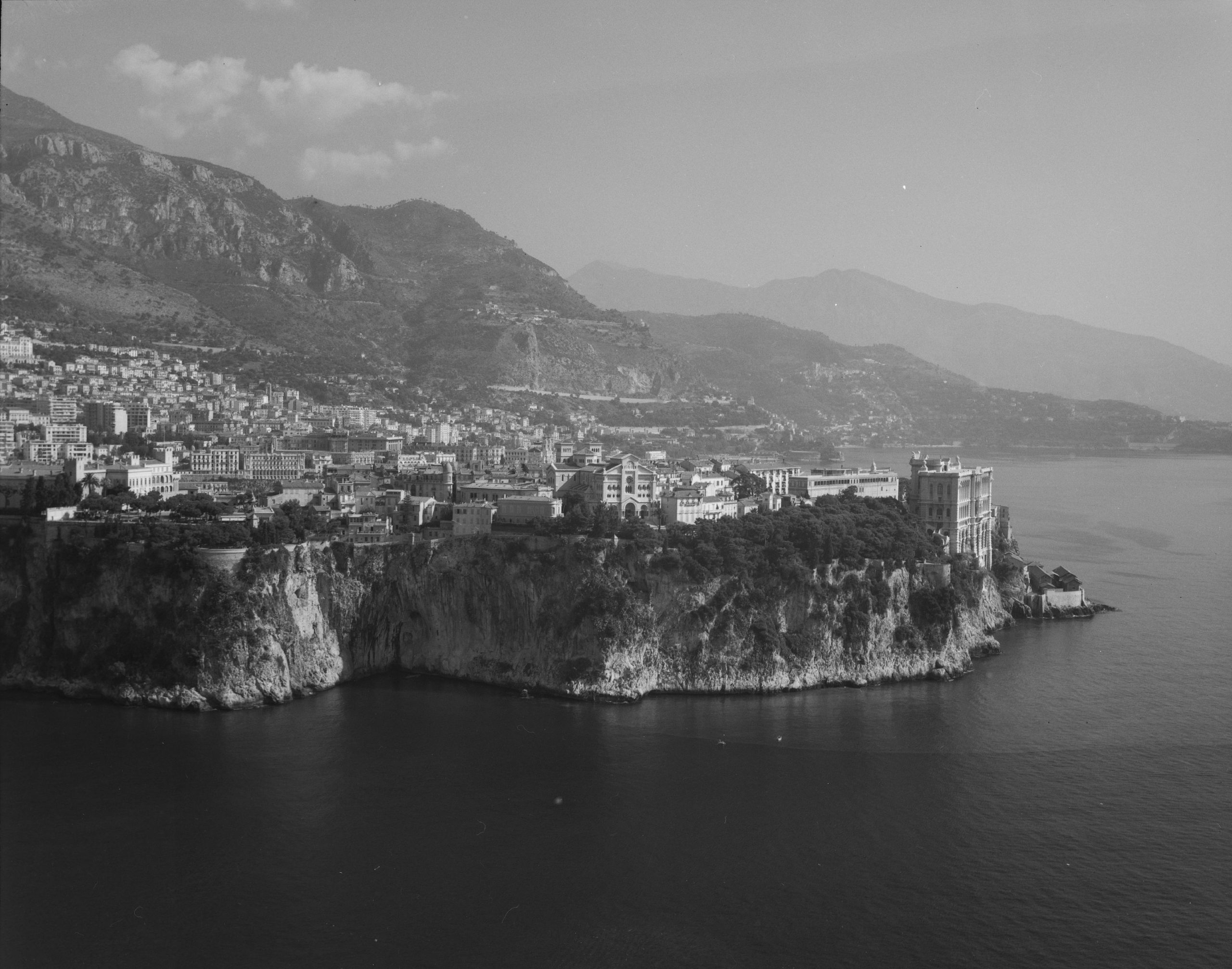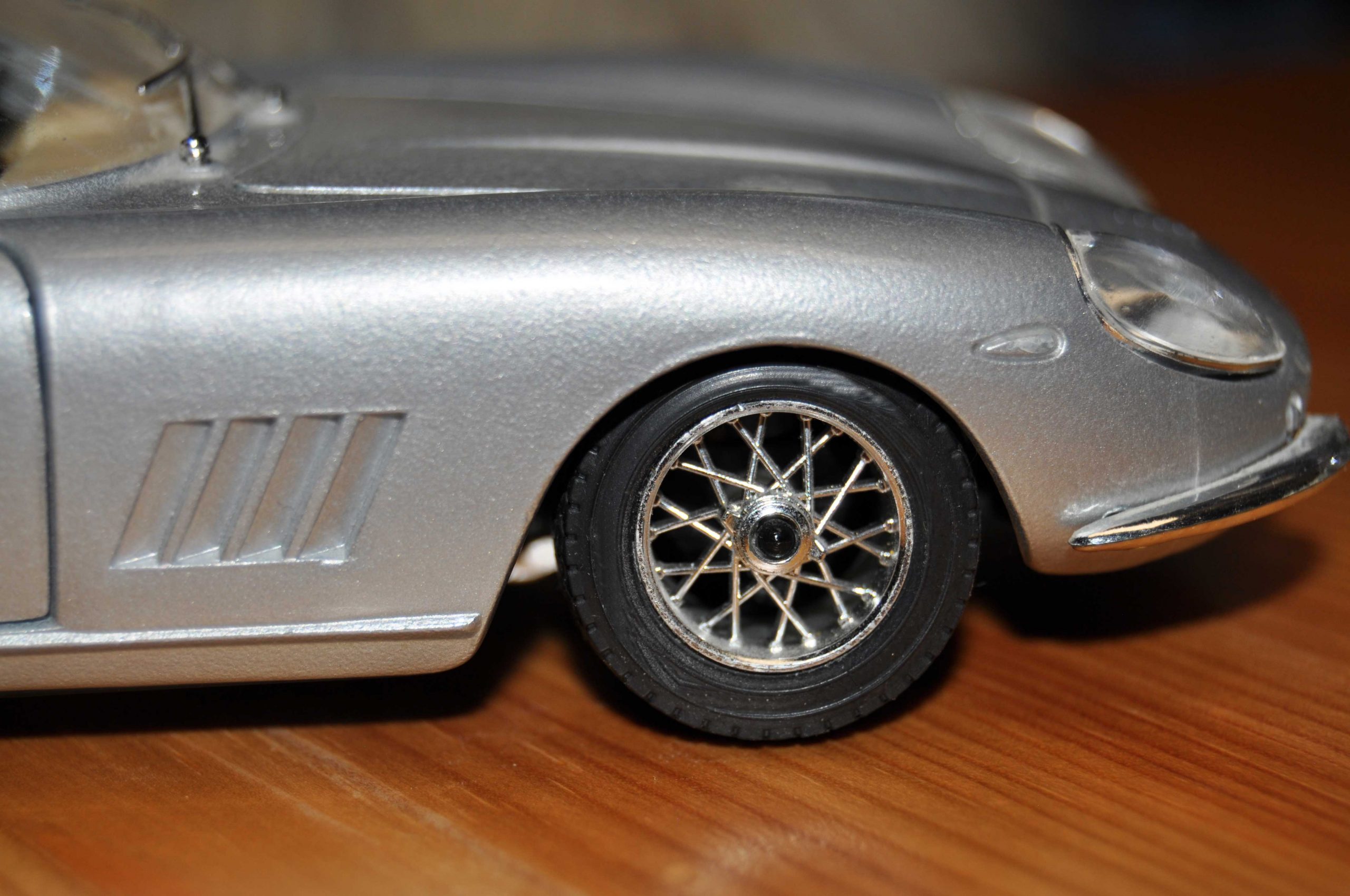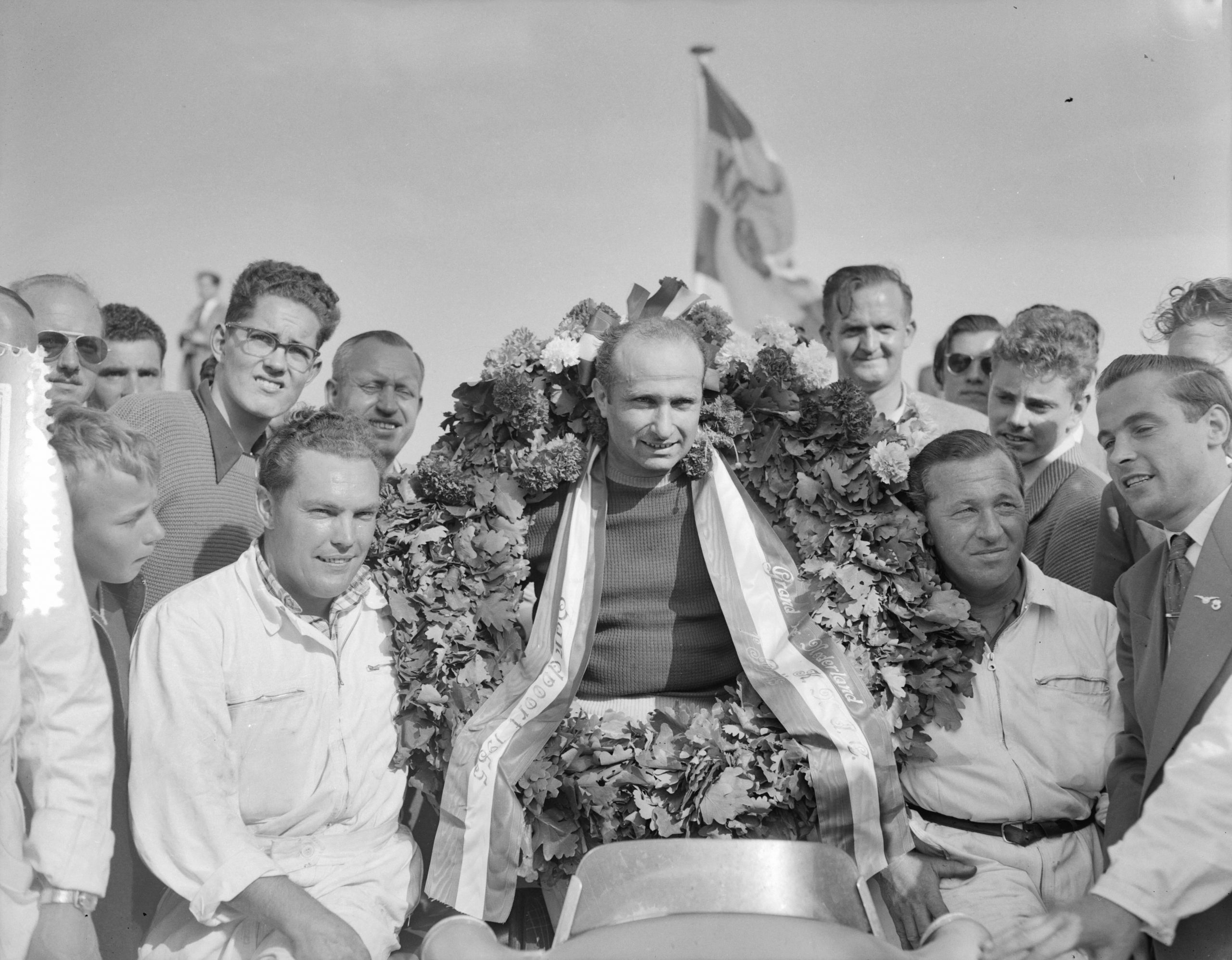When someone mentions his name, one is transported to the magical world of a long-gone era of motorsport: Juan Manuel Fangio was one of the racing drivers whose achievements explain why Formula One is still regarded as the premier class of motorsport today.
Throughout his racing career, Fangio was nicknamed El Chueco in his native South America, which translates as “bow-legged,” alluding to his particular way of walking. His characteristic gait became his trademark and whenever the legendary Fangio ran along the race track, he was recognized from afar by his gait.
Before Fangio proved himself as a racing driver, he earned a reputation as a shrewd car mechanic in his native Argentina. Even at a young age, automobiles held a great fascination for Fangio – in addition to everyday repair work, Fangio constructed racing cars.
At the end of the 1930s, Juan Manuel Fangio proudly presented his first racing car, the Fangio Special: although there were still some weak points, constructing a functional racing car all by himself was a remarkable achievement.
It was a racer’s intellect that ultimately decided whether he would emerge victorious from a race.
Newcomer with modest equipment
It took Fangio a while to come up with the idea of driving the racing car he had designed himself: In 1938, the young driver scored the first major triumph of his racing career. In his first race, Fangio achieved a sensational result with his own race car, which made barely 200 km/h top speed, against a vastly superior race car with a top speed of 260 km/h. The rear wheels of the top rear-wheel-drive competitor came to a halt in a puddle of water, and Fangio’s race car, inferior on paper, pulled away. The young car mechanic finished the race in third place – an absolutely sensational result for a rookie with modest equipment.
Juan Manuel Fangio proved right from his first race that it was not the top speed or horsepower of a race car alone that was decisive for racing success: It was a racer’s intellect that ultimately decided whether he would emerge victorious from a race.
A race over 10,000 kilometers
From September 28 to October 12, 1940, the Gran Premio Internacional del Norte took place in South America: This car race was anything but an ordinary race. The race involved crisscrossing the entire South American continent in seven days, covering a distance of over 4500 kilometers. But the race was not over after seven days: the route then had to be driven back again completely within six days. This brings the total racing distance to just under 10,000 kilometers. The thirteen stages of the race led through different climatic zones: The drivers crossed subtropical and tropical climate zones, the climate had a high-alpine character in the Cordilleras in Bolivia and in the south of Peru. The physical effort was immense and hard to put into words. The highest point passed by the racers was at 4694 meters at a natural pass at Alto de Toroya in Bolivia. However, that 1940 race was a great strain not only on man but also on machine: “The man who invented this race must have had an adventurous idea of the performance of an automobile,” writes Günther Molter in his biography of Juan Manuel Fangio.
Fangio achieved the overall victory in that energy-sapping and material-devouring race in 1940: with an average speed of 86.176 km/h, he beat all his competitors. From now on, Juan Manuel Fangio was no longer an unknown motorsport enthusiast from the small town of Balcarce, known for potato farming, but a sought-after racing driver whose name was in all the newspapers to the far corners of South America.
First races in Europe
Juan Manuel Fangio’s racing career really took off after the Second World War: The government program of Argentina’s first government after World War II included, in particular, generous support for motorsports. When the first automobile clubs in Europe were just resuming their work, they cast an eye on Argentina: The South American country was an ideal venue for car races in January and February. When Europe was in the depths of winter and hardly any racing was possible, Argentina, located in the southern hemisphere, was in midsummer and provided ideal conditions for car racing.
Juan Manuel Fangio followed motor racing with great interest: For him, this meant gradually reaching out to Europe, where numerous prestigious Grand Prix were already being held at the time.
For Fangio, who himself was partly of Italian descent, it must have been a special feeling to win the Gran Premio of Sam Remo in 1949: It was the very first European race from which he emerged victorious.
It is often said that Juan Manuel Fangio retired from racing at the peak of his career.
Unmatched performance
In 1950, the Formula One World Championship was held for the first time: By now, it was a certainty that Juan Manuel Fangio would hold his own against the European racing elite. Fangio emerged victorious from the very second race of the season, the Monaco Grand Prix. The unique racing driver from Argentina continued to dominate the field of drivers during the rest of the 1950 Formula One season: in the following season of 1951, Juan Manuel Fangio became Formula One world champion for the first time. Fangio won the world title a total of five times during his career, setting a record that was not broken until 2003. Of the total of 52 races in which Fangio competed, he won 24 – a sensational rate of victories that no other driver has even come close to matching to this day.
It is often said that Juan Manuel Fangio retired from racing at the peak of his career: When Fangio said goodbye to the sport in 1958, he was 47 years old.
There is no question that Juan Manuel Fangio had one of the most impressive racing careers ever and remained connected to the sport for the rest of his life like hardly anyone else: After all, it was not only driving and the race track that connected him to the sport, but also the technical and mechanical background, the perfect mastery of which had been the beginning of Fangio’s career.
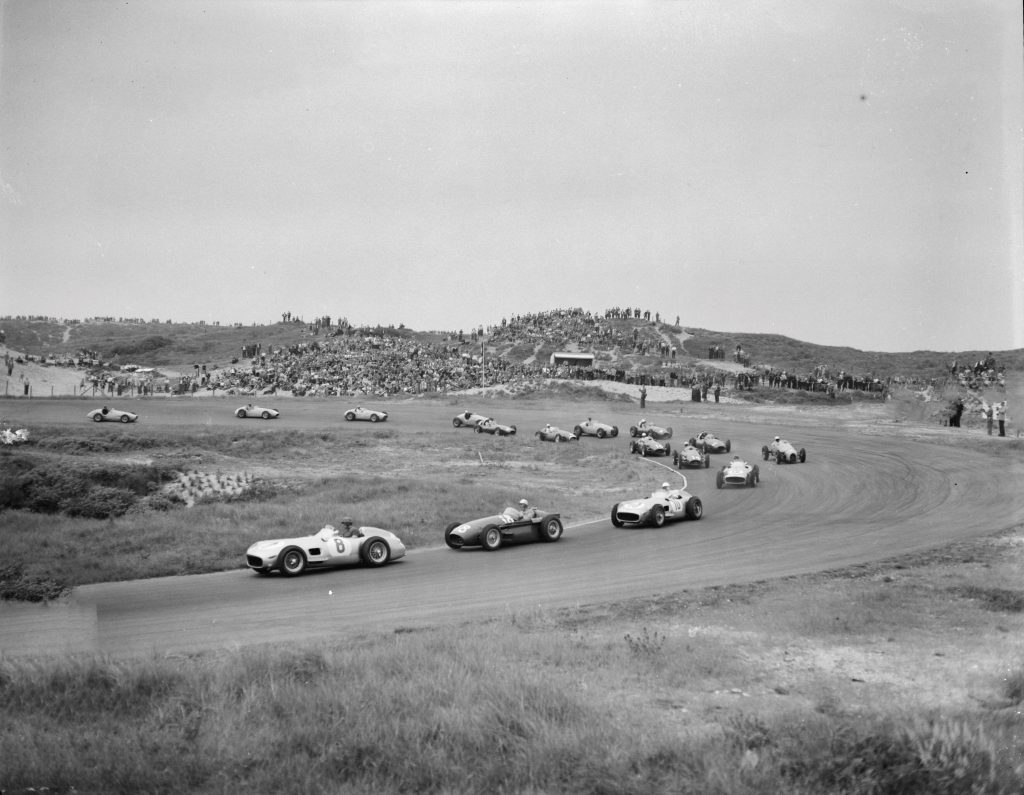
Picture credit: Fotograaf Pot, Harry / Anefo, Nationaal Archief, CC0
Mercedes-Benz team
At the peak of his career, Juan Manuel Fangio was signed on as a driver by the Mercedes-Benz team: The Daimler-Benz Group had decided to re-enter Grand Prix racing from 1954. This entry was marked by a clearly defined goal: The aim was to construct the “most technically interesting racing car of its time”, as Günther Molter describes in his Fangio biography.
At the 41st French Grand Prix on July 4, 1954, the long-awaited Mercedes-Benz team finally presented itself: Juan Manuel Fangio, Hans Herrmann and Karl Kling were signed as drivers. In his very first race in a Mercedes racing car, Fangio scored a first place. In the course of the two Formula One seasons 1954 and 1955, in which Fangio drove for Mercedes, he brought numerous successes to the Mercedes-Benz works team: Fangio’s enormous popularity and success can be seen as one of the reasons why Mercedes-Benz is still active in formula racing today.
National hero
In his native Argentina, Juan Manuel Fangio is regarded as a national hero: he had already won the favor of his countrymen with his first successes as a racing driver.
Thanks to his enormous fund of experience and his great fascination with car mechanics, Fangio was always able to assess his equipment perfectly and appreciated technological innovations – such as Mercedes-Benz implemented in heaps in the fifties – and knew how to use them.
After all, the young Juan Manuel Fangio had been the young man who, as a talented car mechanic, had once helped many a broken-down tractor in the region around the agricultural town of Balcarce back on its feet. To this day, there are two reasons to remember the town of Balcarce near Buenos Aires: First, for the unique potatoes that grow in this region, and secondly, for the fact that the town was the birthplace of racing legend “El Maestro” Juan Manuel Fangio.
Cover picture: Juan Manuel Fangio (center, with the laurel wreath) after his victory in the 1955 Dutch Grand Prix
Picture credit: Fotograaf Pot, Harry / Anefo, Nationaal Archief, CC0
Main source: Molter, Günther: Juan Manuel Fangio, 1995 Motorbuch Verlag Stuttgart

 Deutsch
Deutsch
